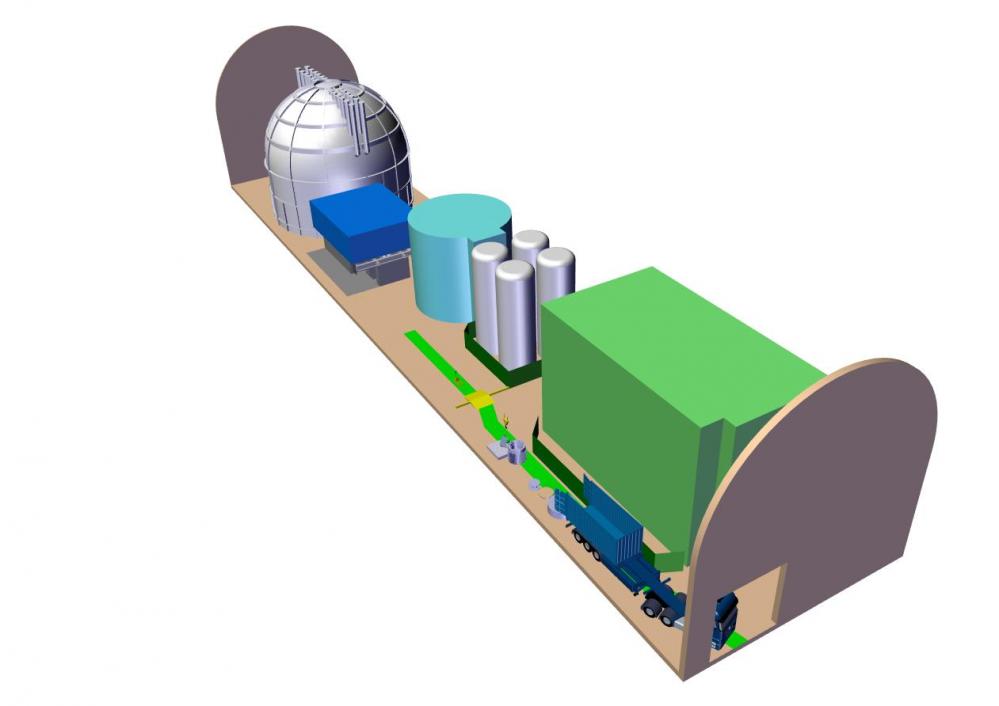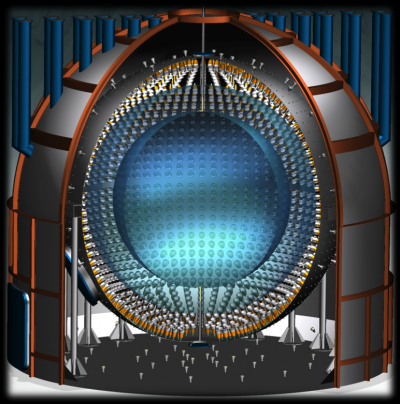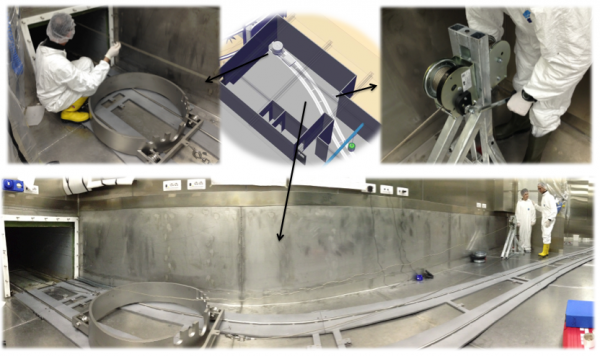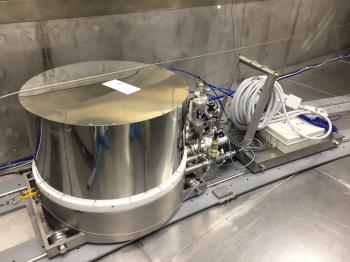Borexino is an experiment performed by an international collaboration and located in the "Hall C" of the Laboratori Nazionali del Gran Sasso (LNGS).
The LNGS is the largest underground laboratory in the world devoted to neutrino and astroparticle physics, a worldwide research facility for scientists working in this field of research, where particle physics, cosmology and astrophysics meet.
Borexino is a large volume ultra-pure liquid scintillator detector installed at the Gran Sasso Laboratory in Italy. This site is located deep underground, therefore providing a strong attenuation of cosmic muons induced background inducing backgrounds.
The detector is composed of a large tank of water in which laid a 6-m radius sphere. Inside this sphere a buffer liquid surrounds the 4.25-m radius internal spherical core housing the liquid scintillator. This 278 tons scintillator target constitute the active volume of the experiment is composed of 1,2,4-trimethylbenzene (PC) doped with diphenyloxazole (PPO).
Borexino has the particularity of being able to detect faint signals of both electron neutrinos and antineutrinos using scintillation the Inverse Beta Decay (IBD) process and the light from scattered electrons, respectively. Originaly the Borexino detector was designed to detect Berylium-7 solar neutrinos requiring an ultra-low intrinsic contamination (<1 count/ton/day) in the low energy region (0.25 to 0.7 MeV).
Installation of the rail and trolley system movong the CeANG at its tungsten alloy shielding at the LNGS laboratory (March 2015).
In October 2017 the collaboration performed a rehearsal of the delivery and handling of the Cerium Antineutrino Generator (CeANG) at LNGS. This operation, involving all relevant protagonists (AREVA, CEA, INFN, ISPRA, Mayak and TUM) has been of key importance to ensure validate all safety aspects, but also to guarantee the success of all operations.





